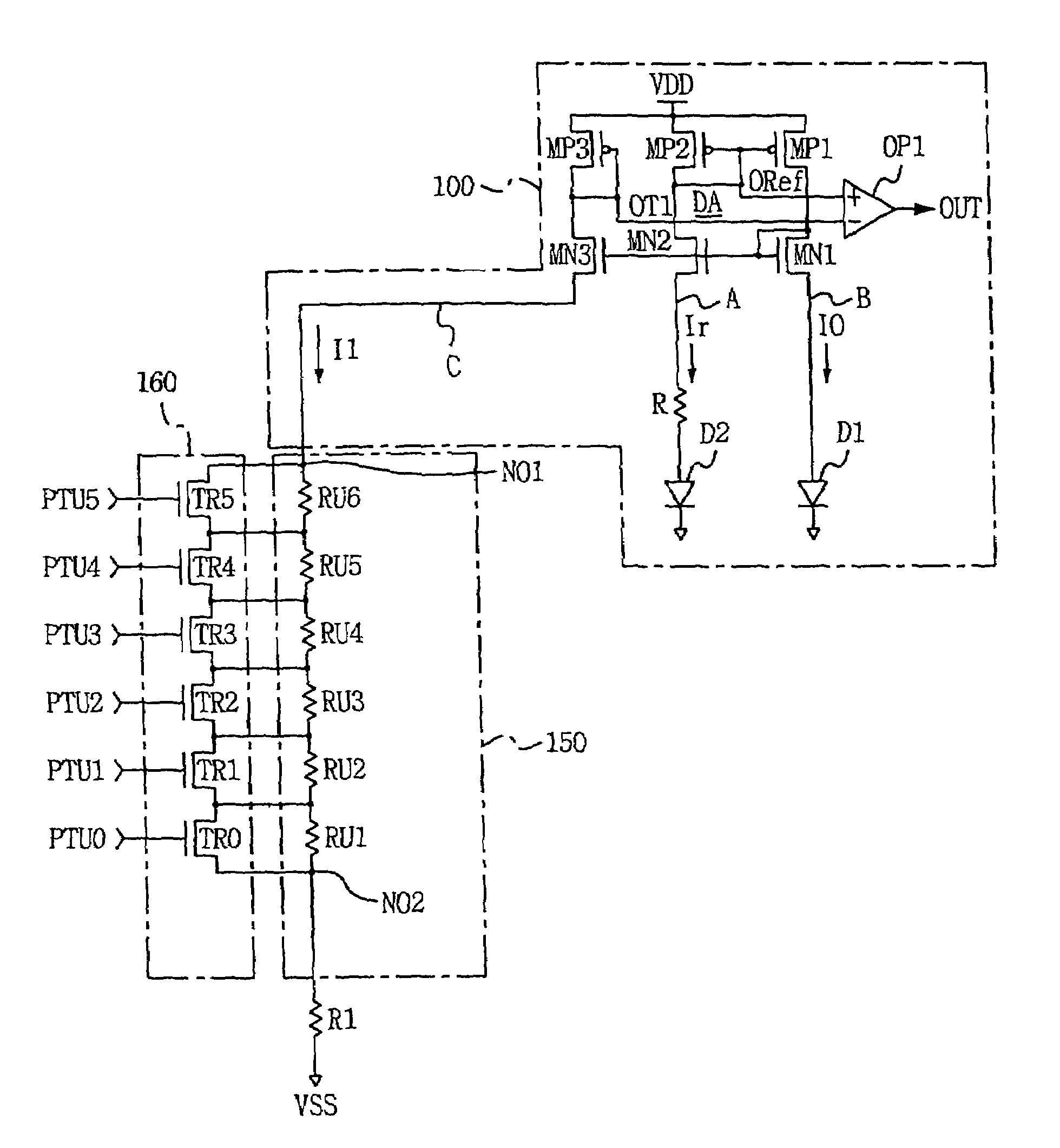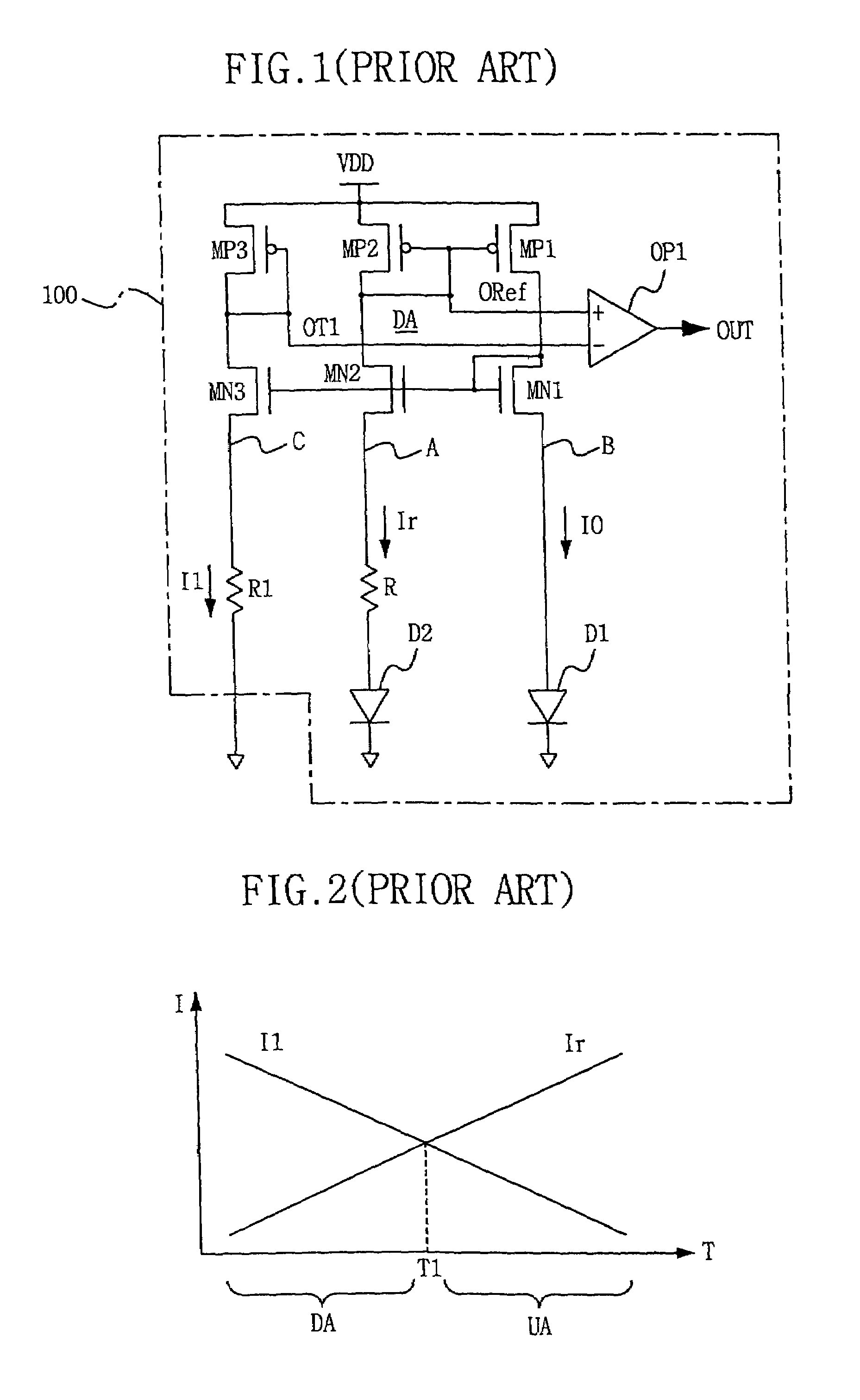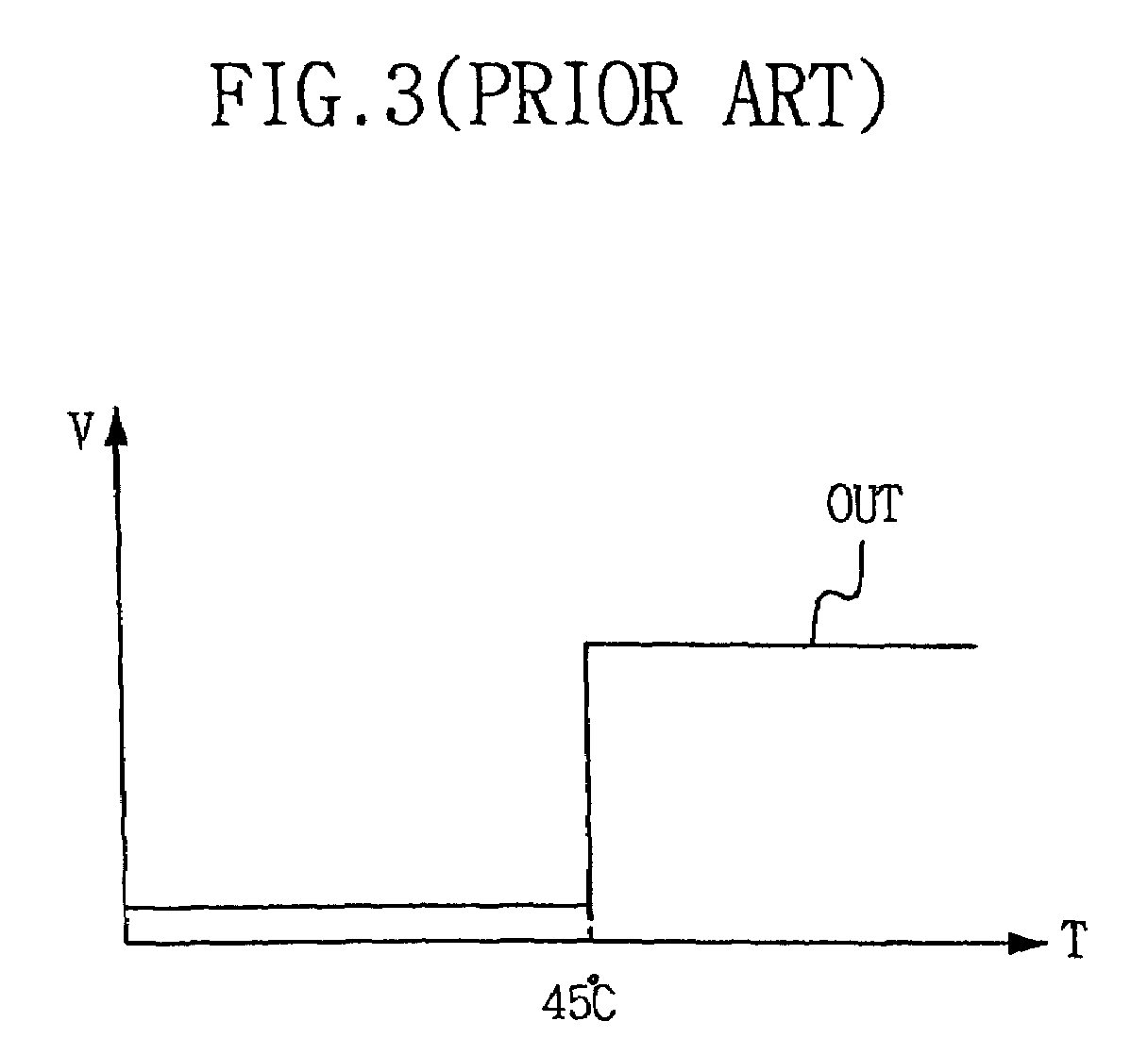Temperature sensing circuit for use in semiconductor integrated circuit
a temperature sensor and integrated circuit technology, applied in the field of temperature sensors, can solve the problems of increasing time, increasing the difficulty of having multiple trip points in the conventional temperature sensor, and reducing the electrical power in the battery operated system requiring a lower electrical power,
- Summary
- Abstract
- Description
- Claims
- Application Information
AI Technical Summary
Benefits of technology
Problems solved by technology
Method used
Image
Examples
Embodiment Construction
[0054]Hereinafter, example embodiments of the present invention will be described in detail with reference to FIGS. 4 to 14 in which like components having like functions have been provided with like reference symbols and numerals.
[0055]It will be understood by those skilled in the art that the present invention can be embodied by numerous different types and is not limited to the following described embodiments. The following various embodiments are examples in nature.
[0056]FIG. 4 shows a circuit diagram of a temperature sensor according to an exemplary embodiment. Referring to FIG. 4, there is shown a structure wherein a first resistance string part 150 and a short-circuit switching part 160 are connected to a decrease resistance branch C of a temperature sensor 100 such as that shown in FIG. 1.
[0057]The temperature sensor of FIG. 4 includes a differential amplifier DA of a current mirror type, a decrease resistance branch C, which is connected between a decrease resistance termin...
PUM
| Property | Measurement | Unit |
|---|---|---|
| specific temperature T1 | aaaaa | aaaaa |
| temperature | aaaaa | aaaaa |
| temperature | aaaaa | aaaaa |
Abstract
Description
Claims
Application Information
 Login to View More
Login to View More - R&D
- Intellectual Property
- Life Sciences
- Materials
- Tech Scout
- Unparalleled Data Quality
- Higher Quality Content
- 60% Fewer Hallucinations
Browse by: Latest US Patents, China's latest patents, Technical Efficacy Thesaurus, Application Domain, Technology Topic, Popular Technical Reports.
© 2025 PatSnap. All rights reserved.Legal|Privacy policy|Modern Slavery Act Transparency Statement|Sitemap|About US| Contact US: help@patsnap.com



